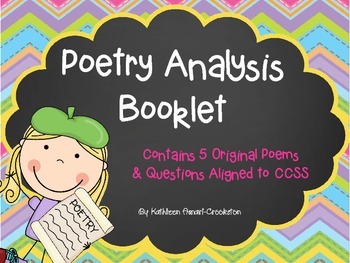According to LaBonty and Danielson (2004), "reading and writing poetry about math involves students with listening, speaking, reading, and writing in order to develop and demonstrate an understanding of mathematical concepts and relationships."
Patterns are important in math as well as in poetry and both are dependent on students' skill with language (symbols/signs and verse/rhyme). Poetry is an alternative vehicle for students to fine-tune their skills with the language of mathematics. Reading and listening to poetry about math allows children to be immersed in the language of math. Collaboratively writing poetry helps children function as "problem solvers rather than information receivers" (LaBonty and Danielson, 2004).
What does this look like in the classroom?

0
Patterns are important in math as well as in poetry and both are dependent on students' skill with language (symbols/signs and verse/rhyme). Poetry is an alternative vehicle for students to fine-tune their skills with the language of mathematics. Reading and listening to poetry about math allows children to be immersed in the language of math. Collaboratively writing poetry helps children function as "problem solvers rather than information receivers" (LaBonty and Danielson, 2004).
What does this look like in the classroom?
- Lakeshore Learning provides a "read and respond" version of "Arithmetic" by Carl Sandburg
- This would be a great beginning of the year activity to get students thinking about how they use math every day.
- Using Shel Silverstein poems in math lessons from We Are Teachers
- "One Inch Tall" could be used to introduce the concept of an inch and what that measurement looks like in real life. Then students can use the poem as a mentor text to write their poem using a different measurement (one centimeter, one meter, etc.).
- Using the poem "Smart," you could see if students understand the difference between number of coins and the value of coins.
- Illuminations lesson using "Shapes" by Shel Silverstein
- Great to use in kindergarten after learning about all the shapes - read the poem out loud to the students and have them draw a illustration that depicts what is happening in the poem. Then students can discuss with each other what words/phrases in the poem helped them decide what to draw.
- For any topic that you are teaching in math, students can write a poem that shows their understanding of the concept being learned. I suggest only doing this after you have given students multiple examples of poetry (math and non-math related).
- Each student can write a poem and they can be collected into one class book with a title that encompasses all the poems (for example: Multiplication in Mrs. Wilson's Room or Quadrilaterals in My Life)
- Looking for students to use mathematical terms but in a different way, you need to read this article about a collaboration between a high school math and English teacher - loved it!
- A second and third grade teacher used The Important Book as a mentor text to have students write about a geometry term. This article "Mathematics and Poetry" details what she did.
- January - introduction on why the connection is important and learn about the vocabulary strategy: word splash
- February - teaching academic vocabulary in math using strategies from your literacy instruction


























